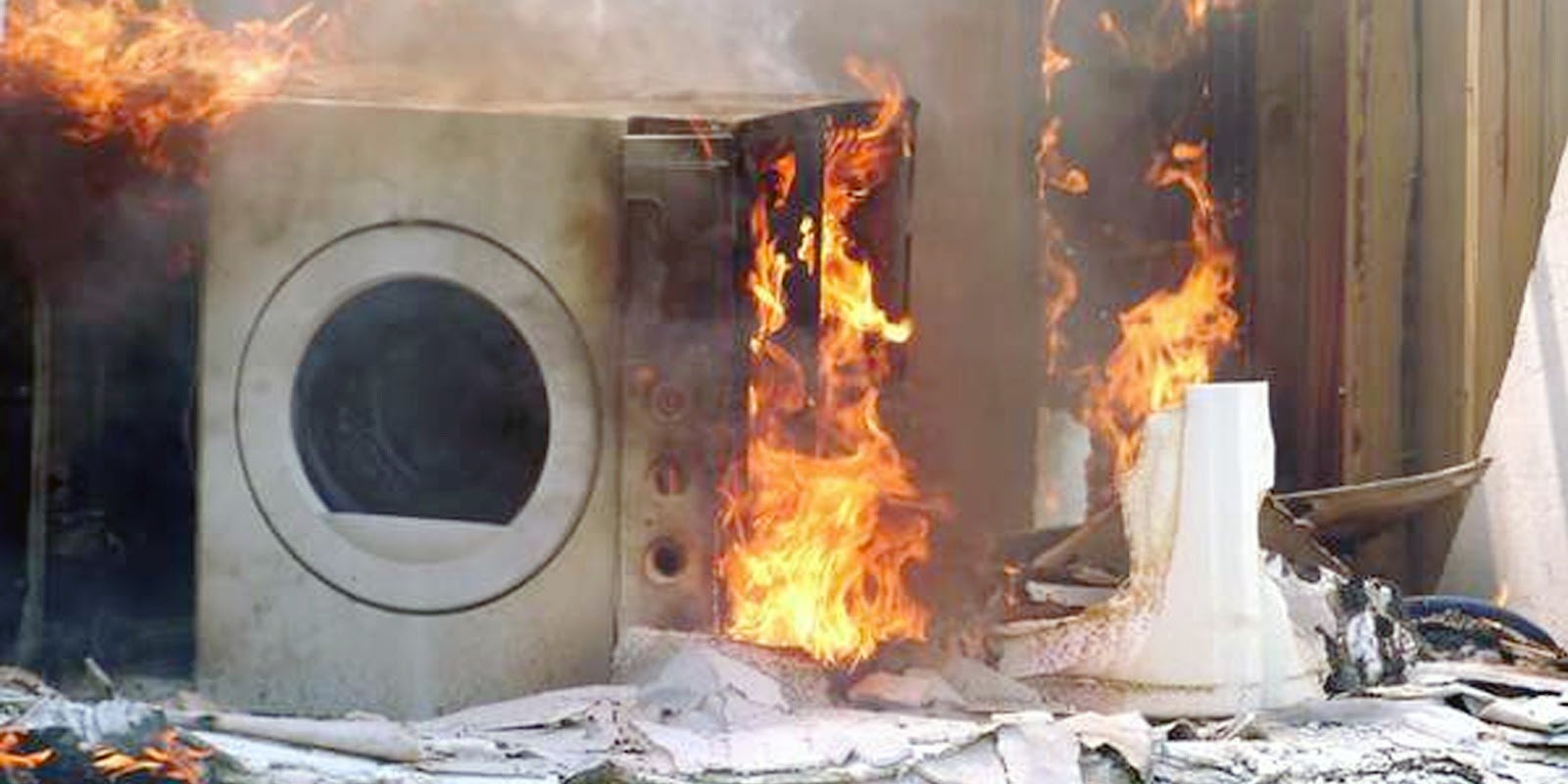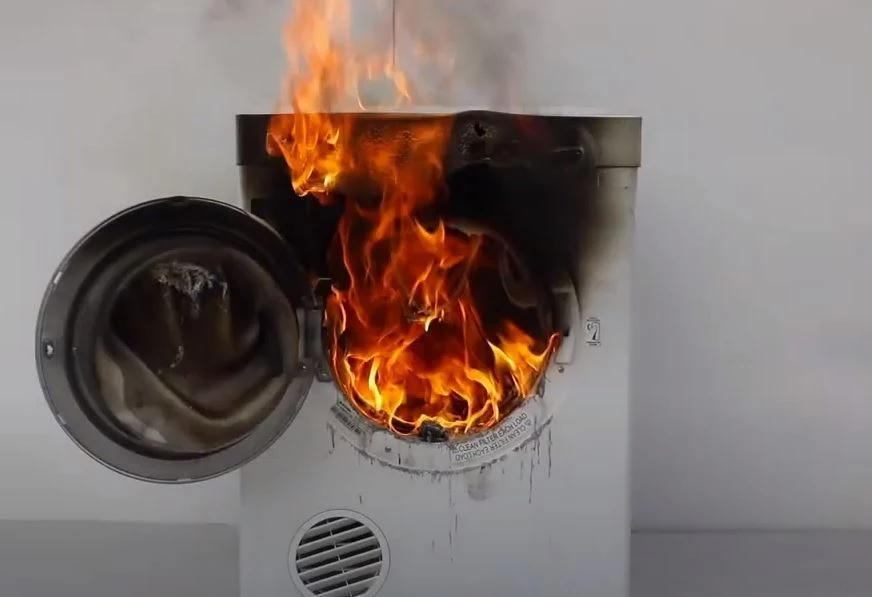Did you know that dryers cause roughly 15,500 home structure of dryer fires, 29 deaths, 400 injuries and $192 million in direct property loss each year? What’s more, most dryer fires happen in the winter.
Causes of Dryer Fires

Poor cleaning and maintenance can increase the risk of dryer fires significantly
Data shows that 32% of those dryer fires in this period were the result of poor cleaning. The high percentage of dryer fire causes listed as poor cleaning is alarming.
So, it is important to understand why this may be the cause. This issue could be down to a range of more specific issues, such as a build-up of flammable material in the vents or a failure to clean out the lint traps.
The lint trap is a chore we can easily get out of the habit of when rushing through household chores. We also may not appreciate how much dirt clogs the vents between the machine and exterior wall.
Crushed Hoses
When you push your dryer back to the wall, you may end up accidentally crushing the exhaust hose. When the dryer can’t move the air, the resulting blow back of lint is dangerous. To protect the duct, check out the Dryer box. It allows you to push the dryer farther back, giving you the convenient space you need and ensuring maximum airflow efficiency.
Lint
Lint is the leading cause of dryer fires. It’s highly flammable, and it’s everywhere. Lint naturally accumulates in your dryer and dryer exhaust system. This buildup makes the dryer work harder for each load and the lint can work its way into the heating element, which is bad news.
Got a long duct run? This can accelerate the buildup of lint. If you have access to the exhaust system, venting products like the airflow-efficient Dryer-Ell can be used to replace all the restrictive elbows, making it easier to get the lint out. Less lint is good.

Tips to Prevent Dryer Fires
- Clean out the lint. “It starts with cleaning out the lint filter every time you use the dryer.” division director of fire Analysis & Research for the National Fire Protection Association. He also advises clearing out the vent pipe to reduce the chance of fire and to maintain the efficiency of the dryer.
- Install with care. Be sure to follow the manufacturer’s instructions when installing the vent pipe. Use a short, straight pipe that’s an adequate distance from the wall. By reducing the bends in the dryer vent pipe, it creates fewer opportunities for lint to gather. If you have to vent your dryer over a long distance, consider investing in a dryer vent fan. These automatic electric devices speed up airflow through the duct every time you turn on your dryer to keep things moving along. A dryer vent fan should be installed by a licensed electrician.
- Clear out combustibles. Move any flammables like cleaning supplies far away from your dryer. Also regularly sweep out dust in the areas around and underneath your dryer.

